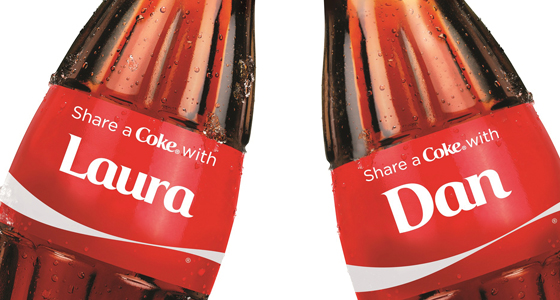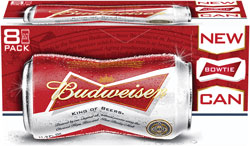And the Winner Is … The Year’s Best Food Packaging
PACKAGING

Annual awards for achievement are as American as apple pie and the latest celebrity chef’s declaration that bacon bit cream cheese will replace lox on Sunday brunch menus. Sprouting headlines in food periodicals and social media, year-end “winners” are claimed to be the harbingers of the coming 12 months. And once in a while some reporters dare to stretch upwards to the packaging, à la WorldStar from the World Packaging Organization or AmeriStar from the Institute of Packaging Professionals or the DuPont awards, printing a short list of noteworthy packaging achievements. The lazy days of summer hardly represent a climactic period on the calendar, but at this time, we shall shout, nay, scream, that food packaging has exploded 360 degrees in breadth, depth, and scope to herald another new generation of protection, communication, and convenience.
A Spotlight on the Spectacular
Most outrageous must be Heineken’s Ignite bottle (see the May 2013 issue of Food Technology), literally flashing like a fourth of July fireworks display, reacting to sound and motion to elicit collective awe from the “unable to rouse from boredom” Millennial young folks. Consumer packaged goods marketers might not leap to clone this wildly executed idea, but some packagers will certainly envision a way to integrate microsensors and signalers that overtly revive and astound consumers.
Not nearly as aggressive, but surely impressive and sure to be imitated are the Absolut Vodka bottles, each differentiated by design color (no two classic glass cylinders are the same) and produced by computer-driven color dispersers. The shopper’s mind interprets the basic structure as the familiar brand, but distinguishes via the singular color splash.
Probably the boldest move in packaging of this half year is Anheuser-Busch’s bowtie-shaped aluminum can. Do canned beer aficionados consciously refer to the printed brand logo as a bowtie shape when selecting a 12-pack? Can they even see the primary package graphics behind the paperboard unitizer? Now that the drinker will perceive a totally different hand feel, will it mean greater attention or no interest? What were the outcomes of the second opening on a Miller beer can end or a spiral interior neck on its glass bottle, both to facilitate liquid swirling, splashing, and dispensing? How about the bottle/can whose graphics respond to content temperature for optimum flavor? Or the write-on “slate” to enable the drinker to identify his/her own bottle in a crowd? Or special double opening shapes for faster pouring? Is the rate of liquid delivery important to the purchaser or a merely a wild, fleeting thought by a market-seeking package designer?
Speaking of which, now that the consumer can purchase a container of Coca-Cola imprinted with his/her own name, will personalization increase purchases or lead to resistance due to an absence of a consumer’s name in the promotional list? Or will the next version be a digital printer that enables the potential purchaser to imprint his own name on the package? After all, Coca-Cola now installs beverage dispensers that permit the consumer to formulate a beverage according to his/her own preference. Is all of this worthy of prizes from judges and consequent sales increases, or are such developments merely annoyances to production managers?
Departures From Tradition
Having determined that beverages may be better appreciated and therefore consumed more readily and in greater volumes by enhancing the packaging, we might note that liquid refreshment need not be in “traditional” aluminum cans and glass bottles: stand-up flexible pouches with injection-molded plastic spouts are next for noncarbonated fruit drinks, wine, cocktails, slushes, and squeezables. The Answer™ is molded for aseptic filling and dispensing. Developed by International Dispensing Corp. (www.idccorporation.com), this spout device maintains liquid content sterility as it is used to dispense sterile products such as syrup, sauce, or dairy lighteners from a bulk flexible pouch. The basic package may be used and reused repeatedly, making it “The Answer” to the age-old challenge of portion-size access to liquid contents.
--- PAGE BREAK ---
 Aseptic Warrants Awards
Aseptic Warrants Awards
Speaking of aseptic, did the annual prizes acknowledge the latest in paperboard married to plastic in Tetra Pak’s Evero paperboard bottle with injection molded plastic dispensing closure (www.tetrapak.com)? Or how about the Tetra Brik Edge with a sloping top? Or Elopak’s gable-top carton? Or what about nonchemical sterilization using pulsed high intensity light (www.claranor.com) or pulsed ultraviolet radiation (www.steribeam.com)?
Despite the advances in paperboard lamination structures for aseptic packaging, dramatic progress in all barrier plastic bottles is multiplying. Hardly new, but rapidly commercializing, are the variations of sterilizing barrier plastic bottle interiors combining the heat of injection molding with hydrogen peroxide treatment of preforms prior to blow molding, an approach applied by GEA Procomac (www.gea.com) and Sidel (www.sidel.com). We estimate that more than a dozen different aseptic polyester bottle systems have been introduced and/or commercialized—mostly for high acid beverages but with a few for low acid products.
Based on the sheer numbers of different machines that have entered the commercial marketplace, aseptic packaging of a much expanded range of foods in barrier plastic bottles, trays, canisters, and variants will populate the food environment. And, if our extrapolation of sterilization technologies applied to the systems is nearly on target, extended shelf life (ESL) products such as fresh seafood, prepared meals, and high viscosity beverages will constitute a significant fraction of the category, perhaps even exceeding classical aseptic in size. But more of that will follow.
Hurdle Over Aseptic
So far we have discussed food packages as classifications in a contest, but in the realities of food integrated from two or more technologies. For example, ESL includes combinations in which aseptic processing of the product is linked physically with clean filling plus near-sterilization of the package plus—and this is crucial—closely controlled chilled distribution to deliver shelf life of 60 to 90 days. Casually categorized as modified atmosphere packaging, the descriptors generally omit the essential “clean” and “temperature control,” suggesting that the sole driver is a gas mixture. In hurdle technology, which is also, unfortunately, a “mysterious” category, multiple technologies are indispensable to the ESL. This includes aseptic for package and product plus temperature plus reduced oxygen plus barrier plastic plus hermetic seal; all are wed to achieve a three-month shelf life for juices or dairy-based beverages.
Moving forward are the emerging incorporations of noncontact antimicrobials in the package structures to suppress mold growth on fresh lettuce or strawberries to prolong chilled shelf life. Note the expansion in the perimeter of the store of refrigerated retail displays containing ready-to-eat and ready-to-heat-and-eat products to accommodate hurried, convenience-seeking consumers. With the Biovation system (www.biovation.com), spun bonded fibers on which chlorine dioxide precursors are adhered in flexible outer wraps to permeate volatilized antimycotics to irregularly shaped strawberries or lettuce leaves during distribution functions to reduce surface mold. Food packaging technologists need not overtly engineer innovative structures in order to deliver significant new packaging benefits.
The Big Nugget
Racheting up the basic concept much further is Global Fresh Foods (www.globalfreshfoods.com), a company that is dedicated at the moment to the distribution of fresh seafood fillets. Perhaps the hurdle technology with the greatest potential is a suite of disparate deliberate elements to offer an incredible six weeks plus chilled shelf life. The combination here includes tight temperature control immediately below the freezing point, oxygen reduction down to near zero, read microoxygen—elevated carbon dioxide, elevated water vapor, in hermetically sealed barrier flexible film pallet wraps.
Tilapia and salmon fillets are being shipped commercially by sea from Chile to U.S. ports, bypassing expensive air freight but offering buyers top quality “fresh” seafood, ready for foodservice or retail outlets. The regulatory issue of anaerobic pathogenic spores from fresh seafood is addressed by the tight distribution temperature control. When the temperature is below the minimum growth level for Clostridia, the hazard does not exist.
Global Fresh Foods is not offering a revolution in primary package structure that appears in restaurant back rooms or in grocery display cases because, as repeatedly reported here, food packaging is far more than a physical structure; it is a holistic system. And, already entering the arena is a new portfolio of even more tightly environmentally controlled, minimally processed and prepared foods being developed by Sustainably Fresh Foods (www.sustainablyfreshfoods.com).
Winning Concepts
The visionaries who have built on and solidified the framework of modified atmosphere were not aiming for a consumer package or an end-of-year award. They were applying fundamental food preservation science. It is easy to say “temperature control,” and it is relatively readily facilitated, but persuading the implementers of this imperative is still a challenge for business. The bold were not (yet) targeting infinite retention of fresh color, flavor, masticatory properties, and nutritional values.
They are assembling components that include the package and its internal and external environments. Those folks live to stretch the limits of slowing microbiological, enzymatic, and biochemical activity rates while simultaneously minimizing quality change in the food product. And their legacy—which will be enormous—is the ability to extend the time horizons to incorporate more key elements into food safety and quality retention, which should be their—and our—ultimate award.
 Aaron L. Brody, Ph.D., Contributing Editor
Aaron L. Brody, Ph.D., Contributing Editor
President and CEO, Packaging/Brody Inc., Duluth, Ga., and
Adjunct Professor, University of Georgia
[email protected]
